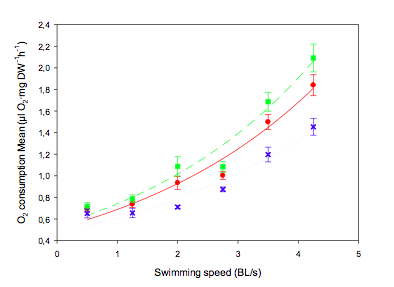Ione Medina Suárez (Ph.D. Student) "The relationship between respiration rates and ETS activity in fishes in relation to swimming activity"
The ocean plays a key role in the global carbon cycle through the so-called biological carbon pump. An important mechanism of carbon export and sequestration is the active flux. Diel vertical migrants (mainly zooplankton and micronekton) have a relevant contribution to the downward transport of carbon through their respiration, excretion, mortality, and egestion during their residence time at depth. Recent studies suggest that micronekton seems to transport similar amounts of carbon than zooplankton. However, its contribution to the carbon pump is, at present, not sufficiently studied. Unfortunately, a good knowledge of micronekton export is rather difficult due to the problems in sampling and to our inability to perform experiments with them. Thus, the use of proxies to assess the respiratory flux of these organisms is of importance to study the deep sea. Here we show the relationship between two ways of measuring the metabolic rate in fishes: (i) oxygen consumption rates in a respirometer, and (ii) their corresponding enzymatic activity of the electron transfer system (ETS). We performed controlled in vivo assays of fish respiration (Sparus aurata) at different swimming activities in order to study the relationship with ETS activity. We found respiration rates (R) to increase with swimming activity as expected. However, ETS activity was rather constant at the different metabolic activities. The obtained R/ETS ratio thus increased with swimming speed and values ranged from 0.5 to 1.5, consistent to R/ETS values found in the literature for zooplankton. These values are suggested for the assessment of respiration rates from ETS activity during diel vertical migration in fishes in order to account for their respiratory flux, and their contribution to the biological carbon pump.
